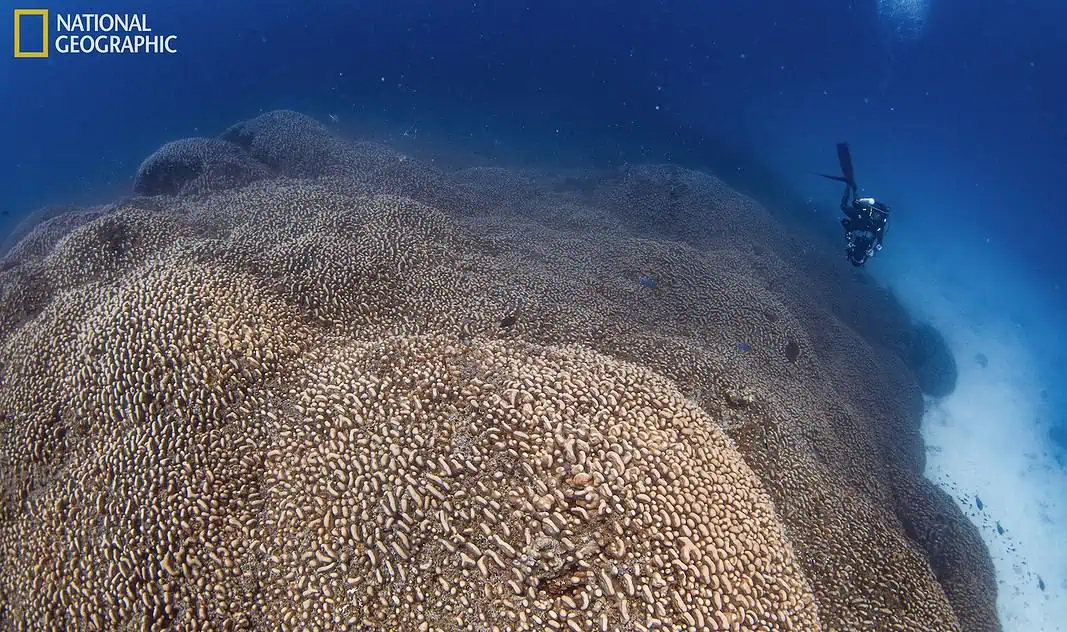A group of scientists working aboard a research vessel in the southwest Pacific Ocean has discovered the world’s largest coral.
Measuring 34 meters/111.6 feet wide, 32 meters/105 feet long and 5.5 meters/18 feet high, with a circumference of 183 meters/600 feet, the gigantic organism is a complex network of coral polyps — tiny individual creatures — that have grown over a span of three centuries.
In contrast to a reef — which is a network of many coral colonies — this structure is a standalone coral that has grown uninterrupted for hundreds of years.
Discovered in the Three Sisters island group by members of the National Geographic Pristine Seas team during their scientific expedition to the Solomon Islands, the mega coral — mostly brown but with splashes of bright yellows, blues and reds — is covered with ripples of waves, mirroring the ocean’s surface. It is longer than the planet’s biggest animal, the blue whale. The coral, species “Pavona clavus,” provides essential habitat, shelter and breeding grounds for an array of species from shrimp and crabs to fish.

According to National Geographic Explorer in Residence and Pristine Seas Founder Enric Sala:
“Just when we think there is nothing left to discover on planet earth, we find a massive coral made of nearly one billion little polyps, pulsing with life and color. This is a significant scientific discovery, like finding the world’s tallest tree. But there is cause for alarm. Despite its remote location, this coral is not safe from global warming and other human threats.”
The coral is so colossal that it can be seen from space. To the naked eye, it may look like an immense rock just beneath the surface of the ocean. When team members initially spotted the structure, they thought it might be remnants of a shipwreck due to its size.
Pristine Seas’ underwater cinematographer Manu San Félix dove down for a closer look and discovered it was an exceptionally big Pavona clavus. Despite its size, the coral has never been documented, with the local community reporting they didn’t know it was there.
Solomon Islands Prime Minister Jeremiah Manele remarked:
“The ocean provides for our livelihoods and has contributed so much to our national economy and communities. Our survival depends on healthy coral reefs, so this exciting discovery underlines the importance of protecting and sustaining them for future generations.”
(Featured Image credit: Manu San Félix, National Geographic Pristine Seas)

